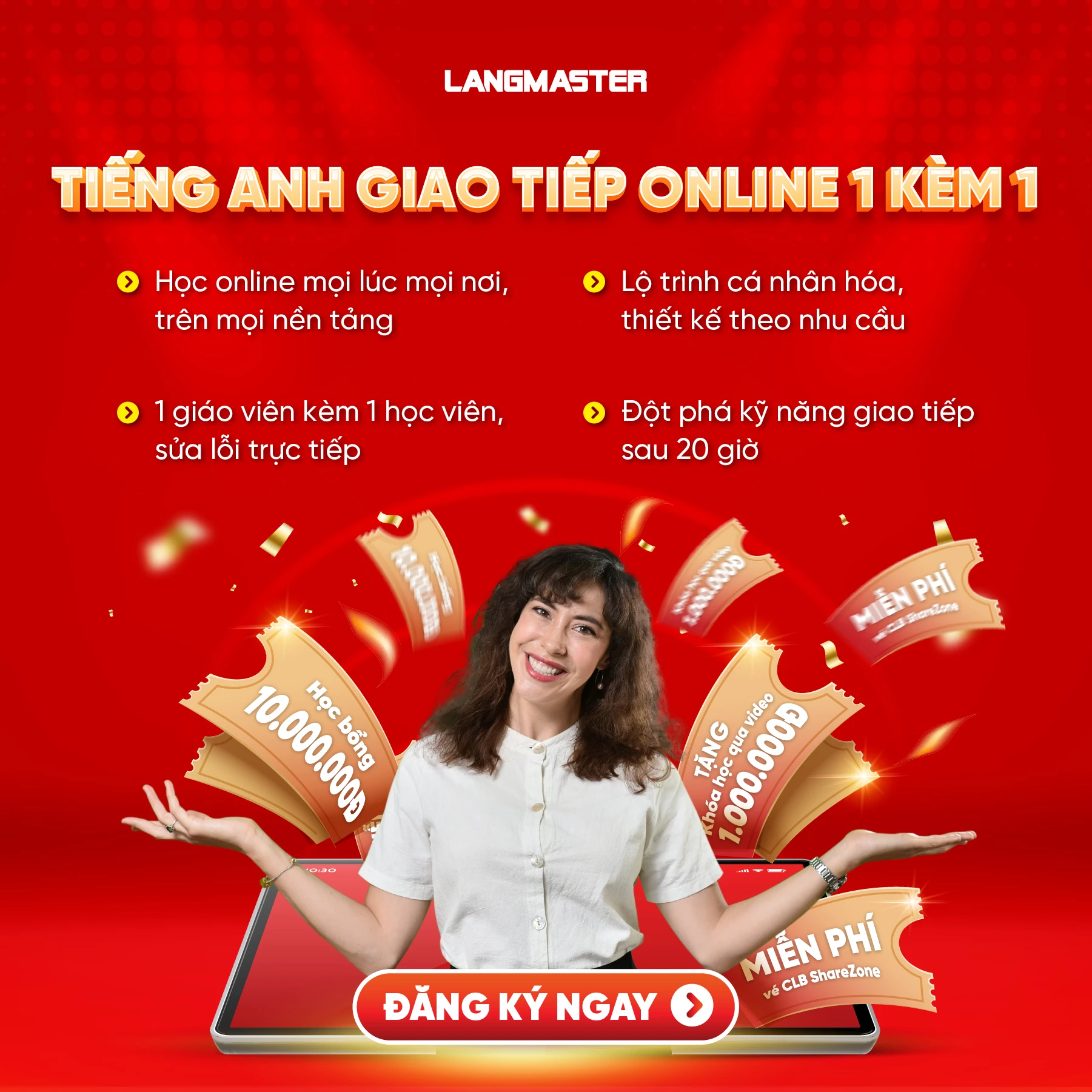Tiếng anh giao tiếp online
Nature's Useful Designs IELTS READING - Giải đề thi thật [Full answers]
Mục lục [Ẩn]
Nature's Useful Designs IELTS READING - Giải đề thi thật [Full answers]
Giải đề IELTS Reading “Nature's Useful Designs” kèm đáp án chi tiết và danh sách từ vựng quan trọng giúp bạn luyện thi hiệu quả và nâng cao band điểm.
Khi ôn tập IELTS Reading, việc luyện kĩ năng giải đề qua các đề thi thật là một cách hiệu quả giúp bạn tăng band điểm nhanh. Bài viết này sẽ giúp bạn giải trọn vẹn đề thi thật IELTS Reading “Nature's Useful Designs” với đầy đủ đề bài, câu hỏi, đáp án chi tiết kèm giải thích rõ ràng. Đây sẽ là tài liệu hữu ích để bạn ôn luyện và nâng cao kỹ năng Reading, sẵn sàng chinh phục band điểm mục tiêu trong kỳ thi IELTS.
1. Đề thi thật IELTS Reading “Nature's Useful Designs”
Reading Passage 2
Nature's Useful Designs
A What has fins like a whale, skin like a lizard, and eyes like a moth? The future of engineering. Almost all living organisms are uniquely adapted to the environment in which they live, some so well that scientists study them in the hope of replicating their natural design in technology. This process, called biomimetics, is the crossroads where nature and engineering meet.
B Perhaps the best example of biomimetics is Velcro. In 1948 a Swiss scientist, George de Mestral, had trouble removing a prickly weed that was stuck to his dog’s fur, so he studied it under a microscope. Impressed by the stickiness of the prickle’s hooks, he copied the design, engineering a fastener made of two pieces. One piece has stiff hooks like the prickle, while the other has soft loops that allow the hooks to stick. De Mestral named his invention Velcro—a combination of the words "velour" and "crochet."
C Andrew Parker, a research fellow at the Natural History Museum in London and at the University of Sydney, is a leading proponent of biomimetics—applying designs from nature to problems in engineering, materials science, medicine, and other fields. He has investigated iridescence in butterflies and beetles and antireflective coatings in moth eyes—studies that have led to brighter screens for cellular phones and an anticounterfeiting technique so secret that only his company is behind it. He is working to make cosmetics that mimic the natural sheen of diatoms (a type of algae) and, with the British Ministry of Defense, to imitate the water-repellent properties of these same creatures. He even draws inspiration from nature’s past: one is the eye of a 45-million-year-old fly trapped in amber that he studies in a museum in Poland. Parker noticed microscopic corrugations that reduced light reflection. This feature is now being built into solar panels.
D To Parker, every species, even those that have become extinct, is a success story, optimized by millions of years of natural selection. His ethos: why not learn from this? Parker explored how the metallic sheen and dazzling colors of certain birds derive not from pigments but from neatly spaced microscopic structures that reflect specific wavelengths of light. Such structural color, fade-proof and more brilliant than pigment, is of great interest to people who manufacture paint and holograms on credit cards. Glowworms produce a cool light with almost zero energy loss (a normal light bulb wastes 98 percent of its energy as heat), and bombardier beetles have a highly effective combustion chamber in their posterior that heats chemicals and fires them at would-be predators.
E For all nature’s sophistication, many of its clever devices are made from simple substances like keratin, calcium carbonate, and chitin, which are manipulated into structures of fantastic complexity and toughness. The abalone, for example, makes its shell out of calcium carbonate, the same stuff as chalk. Yet, by coating this substance into walls of staggered, nanoscale bricks through a subtle play of proteins, it creates an armor 3000 times harder than chalk. Understanding the microscale and nanoscale structures responsible for a living material’s exceptional properties is critical to recreating it synthetically.
F Though impressed by biological structures, Robert Cohen, an engineer at MIT in the United States, considers biology merely a starting point for innovation. “You don’t have to reproduce a lizard’s skin to make a wearable, collective device or a moth’s eye to make an antireflective coating,” Cohen says. He believes biological structures can inspire us to do what is useful. But maybe you can do it better. Ultimately, he considers a biomimetics project a success only if it has the potential to make a useful product. “Looking at pretty structures in nature is not sufficient,” Cohen says. “What I want to know is, can we actually transform these structures into something with true utility in the real world?”
G This, of course, is the tricky bit. Potentially one of the most useful embodiments of natural design is the bio-inspired robot, which could be deployed in places where people would be too conspicuous, bored to tears, or killed. But such robots are notoriously hard to build. Ronald Fearing, a professor of electrical engineering at the University of California, Berkeley, has taken on one of the biggest challenges of all: to create a miniature robotic fly that is swift, small, and maneuverable enough for use in surveillance or search-and-rescue operations.
H The key to making his micromechanical flying insect (MFI) work, Fearing says, is not to attempt to copy the fly, but to isolate the structures crucial to its feats of flying. The fly’s wing is driven by 20 muscles, some of which only fire every fifth wing beat, and one can only stand in wonder, “what on earth just happened there?” says Fearing. Some things are just too mysterious and complex to be able to replicate.
I For all the power of the biomimetics program, and the brilliant people who practice it, bio-inspiration has led to surprisingly few mass-produced products, and arguably only one household word: Velcro. Some biomimetics blame industry, whose short-term expectations about how soon projects should be completed and become profitable clash with the time-consuming nature of biomimetics research. Others lament the difficulty in coordinating joint work among diverse academic and industrial disciplines, which is required to understand natural structures and mimic what they do. But the main reason biomimetics has not yet come of age is that from an engineering standpoint, reproducing such intricate nanostructures is hard. Nonetheless, the gap with nature is gradually closing.
Questions 14-19
Reading Passage 2 has nine paragraphs, A-I.
Which paragraph contains the following information?
Write the correct letter, A-I, in boxes 14-19 on your answer sheet.
- How an organism turns a basic material into something incredibly strong
- A claim that biomimetics has had limited commercial impact so far
- A difficulty that led to a researcher's accidental discovery
- An example of nature being far more efficient than a common household object
- An ancient specimen that inspired a modern innovation
- Situations where it is preferable to replace a human with a machine
Questions 20-22
Look at the following statements (Questions 20-22) and the list of people below.
Match each statement with the correct person, A, B, C, or D.
Write the correct letter, A, B, C, or D in boxes 20-22 on your answer sheet.
- All living things provide something useful for humans to discover.
- Natural designs are sometimes impossible for people to copy.
- Biomimetics achieves nothing unless it has a practical application.
List of People:
- George de Mestral
- Andrew Parker
- Robert Cohen
- Ronald Fearing
Questions 23-26
Complete the sentences below.
Choose ONE WORD ONLY from the passage for each answer.
Write your answers in boxes 23-26 on your answer sheet.
- Andrew Parker is studying the shiny surface of diatoms in order to develop __________.
- Paint companies are interested in the way some __________ get their color.
- Bombardier beetles protect themselves by shooting hot __________ at their enemies.
- One scientist is studying the __________ to build a tiny robot that can help people in danger.
>>> XEM THÊM:
- Chiến thuật làm dạng bài Short Answer Question trong IELTS Reading
- Top Website luyện IELTS Reading miễn phí tốt nhất, đạt band mục tiêu
2. Đáp án đề IELTS Reading “Nature's Useful Designs”
Dưới đây là bảng đáp án cho bạn đối chiếu:
|
14. E |
21. D |
|
15. I |
22. C |
|
16. A |
23. Cosmetics |
|
17. D |
24. Birds |
|
18. C |
25. Chemicals |
|
19. B |
26. Fly |
|
20. B |

Đáp án chi tiết 14 - 19
- How an organism turns a basic material into something incredibly strong → E
“The abalone, for example, makes its shell out of calcium carbonate, the same stuff as chalk. Yet, by coating this substance into walls of staggered, nanoscale bricks through a subtle play of proteins, it creates an armor 3000 times harder than chalk.”
→ Abalone biến chất calcium carbonate thành lớp vỏ siêu bền.
- A claim that biomimetics has had limited commercial impact so far → I
“For all the power of the biomimetics program… bio-inspiration has led to surprisingly few mass-produced products, and arguably only one household word: Velcro.”
→ Biomimetics đến nay mới tạo ra rất ít sản phẩm phổ biến, Velcro là ví dụ duy nhất.
- A difficulty that led to a researcher’s accidental discovery → A
“In 1948 a Swiss scientist, George de Mestral, had trouble removing a prickly weed that was stuck to his dog’s fur, so he studied it under a microscope.
→ Ông gặp khó khăn khi gỡ cỏ khỏi lông chó, từ đó phát minh ra Velcro.
- An example of nature being far more efficient than a common household object → D
“Glowworms produce a cool light with almost zero energy loss (a normal light bulb wastes 98 percent of its energy as heat).”
→ Đom đóm hiệu quả hơn nhiều so với bóng đèn. - An ancient specimen that inspired a modern innovation → C
“One is the eye of a 45-million-year-old fly trapped in amber… Parker noticed microscopic corrugations that reduced light reflection. This feature is now being built into solar panels.”
→ Mẫu ruồi cổ truyền cảm hứng cho pin mặt trời.
- Situations where it is preferable to replace a human with a machine → G
“Potentially one of the most useful embodiments of natural design is the bio-inspired robot, which could be deployed in places where people would be too conspicuous, bored to tears, or killed.”
→ Robot thay thế con người ở nơi nguy hiểm hoặc không phù hợp.
Đáp án chi tiết 20 - 22
- All living things provide something useful for humans to discover → B (Andrew Parker)
“To Parker, every species, even those that have become extinct, is a success story, optimized by millions of years of natural selection. His ethos: why not learn from this?”
→ Parker tin rằng tất cả sinh vật đều có giá trị để học hỏi.
- Natural designs are sometimes impossible for people to copy → D (Ronald Fearing)
“The fly’s wing is driven by 20 muscles… and one can only stand in wonder, ‘what on earth just happened there?’ Some things are just too mysterious and complex to be able to replicate.”
→ Một số cấu trúc sinh học quá phức tạp để sao chép.
- Biomimetics achieves nothing unless it has a practical application → C (Robert Cohen)
Trích dẫn (Paragraph F):
“Looking at pretty structures in nature is not sufficient… what I want to know is, can we actually transform these structures into something with true utility in the real world?”
→ Cohen nhấn mạnh ứng dụng thực tế mới là thành công.
Đáp án chi tiết 22 - 26
- Andrew Parker is studying the shiny surface of diatoms in order to develop Cosmetics
“He is working to make cosmetics that mimic the natural sheen of diatoms (a type of algae).”
- Paint companies are interested in the way some Birds get their color.
“Parker explored how the metallic sheen and dazzling colors of certain birds derive not from pigments but from neatly spaced microscopic structures… of great interest to people who manufacture paint.”
- Bombardier beetles protect themselves by shooting hot Chemicals at their enemies.
“…bombardier beetles have a highly effective combustion chamber in their posterior that heats chemicals and fires them at would-be predators.”
- One scientist is studying the Fly to build a tiny robot that can help people in danger.
“…to create a miniature robotic fly… for use in surveillance or search-and-rescue operations.”
>>> XEM THÊM:
- Giải đề IELTS Reading: Electroreception [Full answers]
- Giải đề IELTS Reading: Sleep Should Be Prescribed Trainer Test 2
3. Từ vựng quan trọng trong bài IELTS Reading “Nature's Useful Designs”
Khi bước vào hành trình giải đề IELTS Reading, việc xây dựng vốn từ vựng theo một lộ trình khoa học là yếu tố then chốt để cải thiện band điểm. Bài viết này mang đến danh sách từ vựng IELTS Reading quan trọng trong bài “Nature's Useful Designs” giúp bạn tăng tốc độ đọc hiểu, nâng cao khả năng phân tích thông tin và từng bước đạt kết quả tốt hơn ở kỳ thi chính thức.
|
Từ / Cụm từ (Từ loại) |
Nghĩa |
Ví dụ trong bài |
|
fins (n) |
vây cá |
“What has fins like a whale, skin like a lizard, and eyes like a moth?” |
|
adapted (adj) |
thích nghi |
“Almost all living organisms are uniquely adapted to the environment in which they live.” |
|
replicating (v) |
sao chép, tái tạo |
“…scientists study them in the hope of replicating their natural design in technology.” |
|
biomimetics (n) |
mô phỏng sinh học |
“This process, called biomimetics, is the crossroads where nature and engineering meet.” |
|
prickly weed (n) |
cỏ dại có gai |
“…had trouble removing a prickly weed that was stuck to his dog’s fur.” |
|
microscope (n) |
kính hiển vi |
“…so he studied it under a microscope.” |
|
fastener (n) |
khóa dán, dụng cụ cài |
“…engineering a fastener made of two pieces.” |
|
iridescence (n) |
hiệu ứng óng ánh |
“He has investigated iridescence in butterflies and beetles.” |
|
antireflective coating (n) |
lớp phủ chống phản xạ |
“…antireflective coatings in moth eyes—studies that have led to brighter screens.” |
|
sheen (n) |
độ bóng, ánh sáng mờ |
“He is working to make cosmetics that mimic the natural sheen of diatoms.” |
|
amber (n) |
hổ phách |
“…the eye of a 45-million-year-old fly trapped in amber.” |
|
corrugations (n) |
nếp gấp, đường gợn sóng nhỏ |
“Parker noticed microscopic corrugations that reduced light reflection.” |
|
pigments (n) |
sắc tố màu |
“…colors of certain birds derive not from pigments but from… structures.” |
|
structural color (n) |
màu cấu trúc |
“Such structural color, fade-proof and more brilliant than pigment…” |
|
combustion chamber (n) |
buồng đốt |
“…bombardier beetles have a highly effective combustion chamber in their posterior…” |
|
keratin (n) |
keratin (chất sừng) |
“…made from simple substances like keratin, calcium carbonate, and chitin.” |
|
calcium carbonate (n) |
canxi cacbonat |
“The abalone… makes its shell out of calcium carbonate.” |
|
armor (n) |
áo giáp, lớp bảo vệ |
“…it creates an armor 3000 times harder than chalk.” |
|
synthetically (adv) |
nhân tạo, tổng hợp |
“…critical to recreating it synthetically.” |
|
utility (n) |
tính hữu dụng |
“…can we actually transform these structures into something with true utility in the real world?” |
|
embodiment (n) |
hiện thân |
“…one of the most useful embodiments of natural design is the bio-inspired robot.” |
|
maneuverable (adj) |
dễ điều khiển, linh hoạt |
“…to create a miniature robotic fly that is swift, small, and maneuverable.” |
|
micromechanical (adj) |
cơ học siêu nhỏ |
“The key to making his micromechanical flying insect (MFI) work…” |
|
nanostructures (n) |
cấu trúc nano |
“…from an engineering standpoint, reproducing such intricate nanostructures is hard.” |
|
lament (v) |
than phiền |
“Others lament the difficulty in coordinating joint work among diverse academic and industrial disciplines.” |
>>> XEM THÊM:
- Phương pháp học từ vựng IELTS hiệu quả và dễ nhớ nhất
- Top 10 sách học từ vựng IELTS hay và hiệu quả nhất cho người mới
4. Nâng cao band điểm IELTS cùng khóa học IELTS online của Langmaster
Khi ôn luyện đề IELTS Reading “Nature's Useful Designs”, nhiều thí sinh gặp trở ngại trong việc nhận diện dạng câu hỏi và vận dụng vốn từ học thuật sao cho phù hợp. Để cải thiện kỹ năng làm bài và tăng band điểm Reading, người học cần có chiến lược luyện tập khoa học, kết hợp cùng lộ trình học tập rõ ràng.
Hiểu được nhu cầu này, Langmaster đã thiết kế các khóa học IELTS online cá nhân hóa, giúp học viên xây dựng nền tảng vững chắc. Với sự đồng hành sát sao từ đội ngũ giảng viên giàu kinh nghiệm, học viên sẽ được sửa lỗi nhanh chóng trong vòng 24 giờ và định hướng phương pháp ôn luyện hiệu quả, từ đó nâng cao tốc độ đọc hiểu và chinh phục mục tiêu IELTS một cách bền vững.
Tại Langmaster học viên được:
- Coaching 1 - 1 với chuyên gia: Học viên được kèm riêng để khắc phục điểm yếu, phân bổ thời gian thi chi tiết, tập trung rèn kỹ năng chưa vững và rút ngắn lộ trình nâng band.
- Sĩ số lớp nhỏ, 7 - 10 học viên: Giáo viên theo sát từng bạn, nhiều cơ hội trao đổi và nhận phản hồi chi tiết.
- Lộ trình học cá nhân hóa: Thiết kế dựa trên trình độ đầu vào và mục tiêu điểm số, kèm báo cáo tiến bộ hàng tháng.
- Giáo viên 7.5+ IELTS: Chấm chữa bài trong 24 giờ, giúp bạn cải thiện nhanh chóng và rõ rệt.
- Thi thử định kỳ: Mô phỏng áp lực thi thật, phân tích điểm mạnh - yếu để điều chỉnh chiến lược học.
- Cam kết đầu ra, học lại miễn phí: Đảm bảo kết quả, giảm thiểu rủi ro “học xong vẫn chưa đạt mục tiêu”.
- Học online tiện lợi, chất lượng như offline: Có bản ghi để xem lại, linh hoạt, tiết kiệm thời gian, chi phí.
- Hệ sinh thái học tập toàn diện: Tài liệu chuẩn, bài tập online, cộng đồng học viên và cố vấn luôn đồng hành.
Đăng ký học thử IELTS Online miễn phí ngay hôm nay để trải nghiệm lớp học thực tế, kiểm tra trình độ và nhận lộ trình học tập hiệu quả, giúp bạn thành thạo kỹ năng IELTS Reading và chinh phục mục tiêu IELTS!
Khi ôn luyện đề IELTS Reading “Nature's Useful Designs”, học viên không chỉ nắm vững đáp án đúng mà còn phát triển khả năng phân tích theo từng dạng câu hỏi một cách logic. Việc kết hợp từ vựng học thuật trong ngữ cảnh thực tế giúp ghi nhớ hiệu quả, đồng thời mở rộng vốn từ cần thiết cho kỹ năng đọc, chinh phục band điểm IELTS hiệu quả.
Nội Dung Hot
KHÓA TIẾNG ANH GIAO TIẾP 1 KÈM 1
- Học và trao đổi trực tiếp 1 thầy 1 trò.
- Giao tiếp liên tục, sửa lỗi kịp thời, bù đắp lỗ hổng ngay lập tức.
- Lộ trình học được thiết kế riêng cho từng học viên.
- Dựa trên mục tiêu, đặc thù từng ngành việc của học viên.
- Học mọi lúc mọi nơi, thời gian linh hoạt.

KHÓA TIẾNG ANH GIAO TIẾP ONLINE
- Học theo nhóm (8-10 người), môi trường học tương tác và giao tiếp liên tục.
- Giáo viên đạt tối thiểu 7.0 IELTS/900 TOEIC.
- Học online chất lượng như offline.
- Chi phí tương đối, chất lượng tuyệt đối.
- Kiểm tra đầu vào, đầu ra và tư vấn lộ trình miễn phí

KHÓA TIẾNG ANH TRẺ EM
- Giáo trình Cambridge kết hợp với Sách giáo khoa của Bộ GD&ĐT hiện hành
- 100% giáo viên đạt chứng chỉ quốc tế IELTS 7.0+/TOEIC 900+
- X3 hiệu quả với các Phương pháp giảng dạy hiện đại
- Lộ trình học cá nhân hóa, con được quan tâm sát sao và phát triển toàn diện 4 kỹ năng
Bài viết khác

Nâng cao trình độ tiếng Anh của bạn với bộ tài liệu miễn phí từ Langmaster! Đăng ký ngay để bắt đầu hành trình chinh phục tiếng Anh!

Kỳ nghỉ hè 2024 sắp kết thúc, thời gian trở lại trường học của các mầm non đất nước ngày càng gần. Vậy lịch đi học lại sau hè 2024 của 63 tỉnh thành là khi nào?

Bạn muốn hiểu rõ hơn về cấu trúc bài thi Cambridge. Hãy đăng ký "Thi Thử Tiếng Anh Cambridge Miễn Phí Tại Langmaster - Nhận Góp Ý Từ Giảng Viên” ngay hôm nay.

Bạn đang có nhu cầu tìm khóa học tiếng Anh giao tiếp cho người lớn tuổi để đi nước ngoài? Tham khảo ngay bài viết dưới đây cùng tiếng Anh giao tiếp Langmaster nhé!

Review top 5+ Khóa học tiếng Anh thương mại cho doanh nghiệp: tham khảo các khóa học tại Langmaster, EIV, Skype English, AROMA, Axcela, Wall Street English,...







 16+ năm kinh nghiệm,
800.000+ học viên
16+ năm kinh nghiệm,
800.000+ học viên


